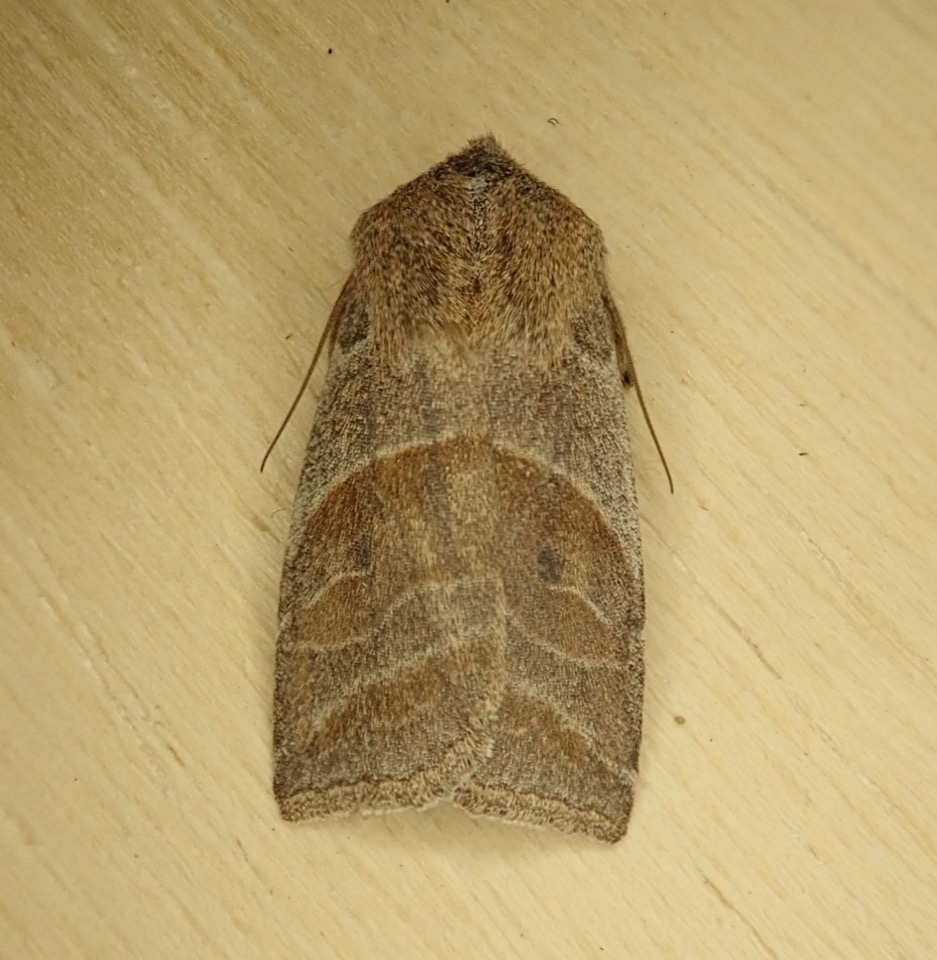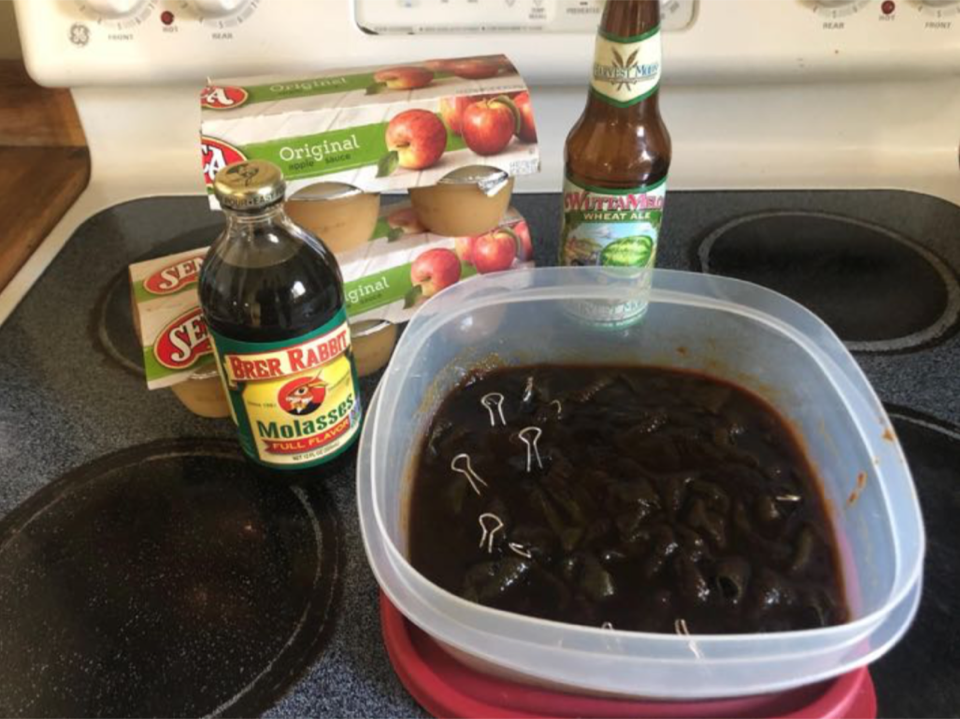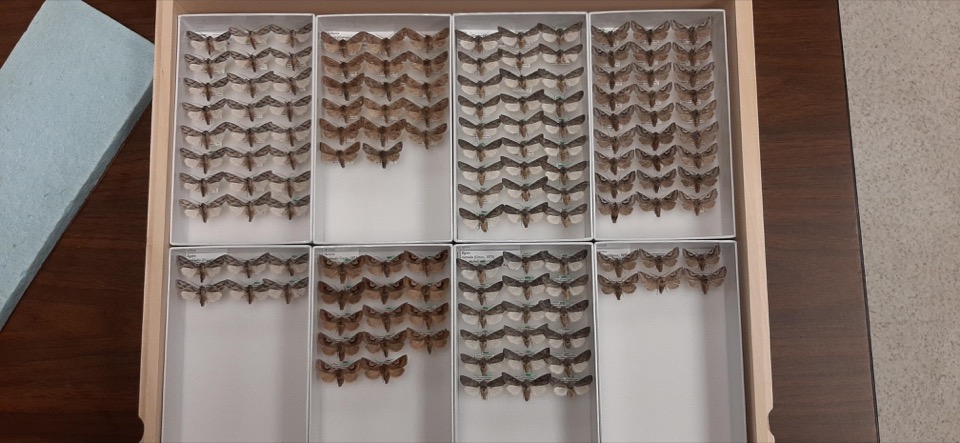
Early Spring Mothing Highlights
May 27th, 2020
Block title
By: Carrie Voss
and Mat Seidensticker
Species:
Research Projects:
In March, we began setting up light sheets in the Bitterroot Valley to look for early spring-flying moths. This is the earliest we’ve attempted to look for moths. Despite the slow and cold nights, we’ve observed and collected 27 new species for the project, including Xylena cineritia, Xylena brucei, Sarata edwardsialis, Eupsilia devia, Eupsilia tristigmata, Ufeus satyricus, and Lithophane disposita.
A Lost Sallow (Eupsilia devia) collected March 10th, 2020
Image 2. A Dashed-gray Pinion (Lithophane disposita) collected April 8th, 2020
The night of April 8th, we set up a light sheet along Miller Creek (Image 3). The first bat of the season flew above us as we set up. Despite the chilly night, once we got our lights turned on our most numerous visitors were Pleromelloida moths (Pleromelloida spp., Image 4). As we were packing up to leave, we heard a new species for MPG Ranch, a Barred Owl (Strix varia) singing on the hillside above the creek.
The yellow point indicates the light sheet location and the circle indicates where we heard the Barred Owl singing.
An Estate Pleromelloida (Pleromelloida bonuscula) observed along Miller Creek.
Thanks to advice from moth expert and collaborator Chuck Harp, we mixed up molasses bait as a complimentary strategy to catch moths (Image 5). We soaked strips of fabric in a mixture of molasses, apple sauce, and beer to hang on tree branches. At first it didn’t seem to work, but finally on April 9th we got our first visitor, an American Swordgrass Moth (Xylena nupera). The bait attracted several visitors on April 29th during a light sheet in the north Miller area. We will continue baiting during light sheet operations throughout the season.
We combine molasses, apple sauce, and a bit of beer to make bait for attracting moths.
A Rosewing Moth (Sideridis rosea) attracted to our molasses bait.
On March 30th, we started our weekly monitoring sites on MPG Ranch (Image 7). Every week we will set up traps for one night at each site. This will continue until mid-October. In the mornings we photograph (and sometimes collect), identify, and count each moth caught in the traps.
Points show the location of light trap monitoring sites on MPG Ranch.
A light trap we set up at the Beehives site.
On April 6th, we found an exciting new moth at the Lower Sheep Camp site. This is the first time we have found a Darling Hooded-owlet Moth (Cucullia pulla, Image 9) and it seems to be a new record for Missoula county. This moth flies in early spring and its larvae are food-plant specialists feeding on rabbitbrush species.
A Darling Hooded-owlet Moth (Cucullia pulla) we collected April 6th, 2020
During the week of the new moon in April, we started collecting moths to send to Chuck Harp at the C. P. Gillette Museum of Arthropod Diversity. With our newly purchased cabinet and drawers and we are excited to start building our collection in the museum (Image 10). We collected over 700 moths from our weekly, monthly, and exploratory sites.
A display of our collected specimens stored at the Gillette Museum.
Early spring mothing brought us exciting new species and observations. Now that we’re getting closer to summer, the moth diversity is increasing. We’re looking forward to the warmer nights and collecting more moths for the Gillette Museum. Follow our progress on iNaturalist and/or Leps by Fieldguide, (username: mpgranch). Also check out our website for more information about the Montana Moth Project.




























